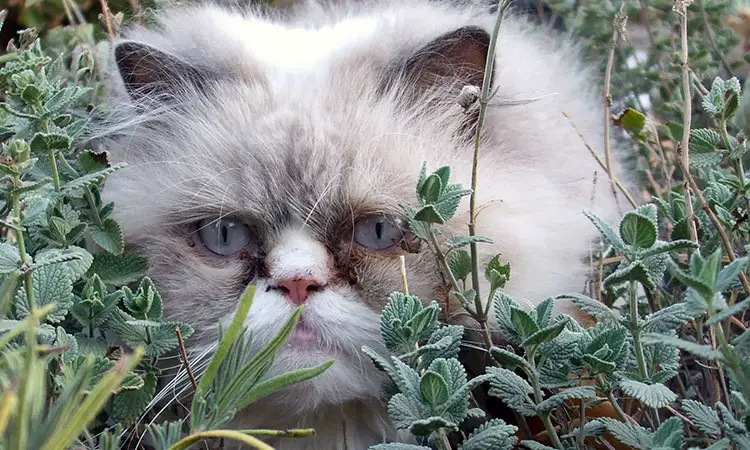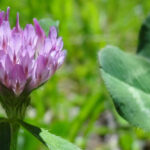So many catmint varieties, so little time! There are over 250 species of Nepeta in Europe and Asia. But only a fraction of these make it onto a gardener’s list of must-haves. Most catnip plants produce a tightly-packed cluster of green or grey-green foliage from which brilliant catnip flowers spring forth in shades of blue, lavender, white, and even a pale yellow.
Is there a difference between catmint and catnip?
Is it a good addition for you?
And perhaps most importantly, will your garden be destroyed by an overly-zealous cat if you plant it? Let’s find out!
Listen to this post on the Epic Gardening Podcast
Subscribe to the Epic Gardening Podcast on iTunes
Overview
| Common Name(s) | Catmint, Catnip, Catnep, Catswort, Field balm |
| Scientific Name | Nepeta |
| Family | Lamiaceae |
| Height | 20-39 inches |
| Light | Full sun or partial shade |
| Water | Drought-tolerant |
| Soil | Well-draining, can handle other types |
| Fertilizer | Compost, otherwise none needed |
| Pests | Cats (no, really) |
All About Catmint
 Nepeta cataria, also known as common catnip.
Nepeta cataria, also known as common catnip.You might notice that I seem to have been using the terms “catmint” and “catnip” interchangeably at times. That’s because they are both common names for the Nepeta species. But is there a difference? And what does catnip look like?
The perfect party starter for your feline friends, Nepeta cataria (common catnip) will go down in infamy as a crazy cat drug. But really, almost any variety will do in a pinch.
That’s all caused by the naturally-occuring chemical known as nepetalactone. Most varieties have it to some degree, but Nepeta cataria has it in a much higher ratio than others. If you’re growing catnip solely for your cat’s use, then Nepeta cataria is perfect.
Nepeta cataria — the catmint plant — is normally used less in ornamental gardens, as it has a weedy look. It’s not ugly, but there are many other Nepetas which completely blow it away in terms of flower production and attractiveness, and which aren’t quite as prone to being rolled around on or chewed up by the neighborhood cat population.
So, if you plan on having multiple varieties of Nepeta in your garden to create a beautifully-layered look or for a diversity of floral shades, you should strategically place Nepeta cataria elsewhere – away from your other plants – to encourage cats to go to that spot rather than into your prize flowerbed. Your plants will thank you.
Types of Catmint
Nepeta racemosa ‘Walker’s Low’, ‘Walkers Low’
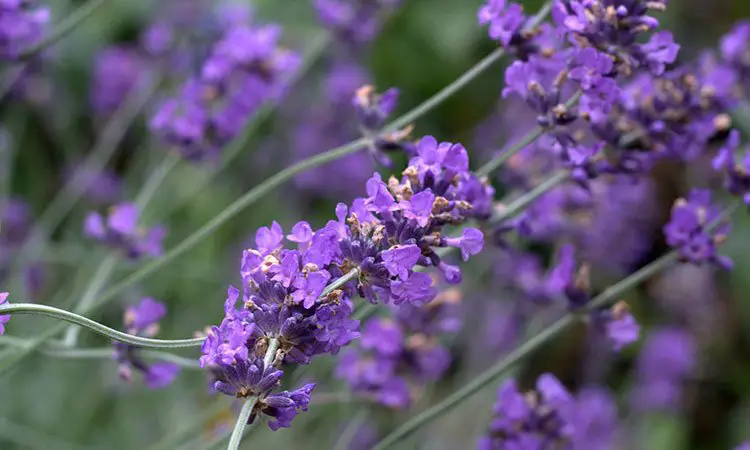 Nepeta racemosa ‘Walker’s Low’ source
Nepeta racemosa ‘Walker’s Low’ sourceNamed “Perennial of the Year” in 2007, and one of the most reknowned catnip plants, the subspecies of nepeta Walker’s Low offers an abundance of lavender-blue flowers spiking above its gray green foliage from mid-May through late September. These Walker’s Low catmint plants can easily reach 30 inches in height from ground to top of flower stalk, and grows to be about 36-40 inches wide. So while Walker’s Low might seem like it’s named for a smaller stature, it’s actually somewhat tall! Walker’s Low is one of the most common cultivars out there, so you should have no problem finding one in a nursery.
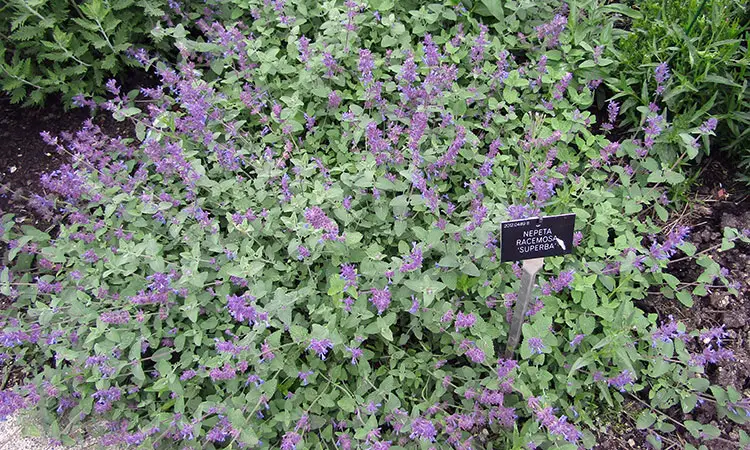 Nepeta racemosa ‘Superba’ source
Nepeta racemosa ‘Superba’ sourceRacemosa varieties all tend to have greyish-green foliage, but the flower color changes with the varietal. Some other examples of include ‘Little Titch’ (purple-blue catnip flowers from April to August), ‘Blue Ice’ (very pale lavender flowers from early May to late September), and ‘Superba’ (true lavender flowers from early June to late September). There’s also varieties like ‘Little Walker’, which is a roughly 16-inch tall version of Walkers Low.
Nepeta faassenii ‘Kit Cat’
Compared to Walker’s Low, ‘Kit Cat’ is a tiny little thing. Growing only about eight inches tall, this dwarf variety can easily spread out to 20 inches wide, and produces lavender-blue flower spikes from mid-June to mid-September.
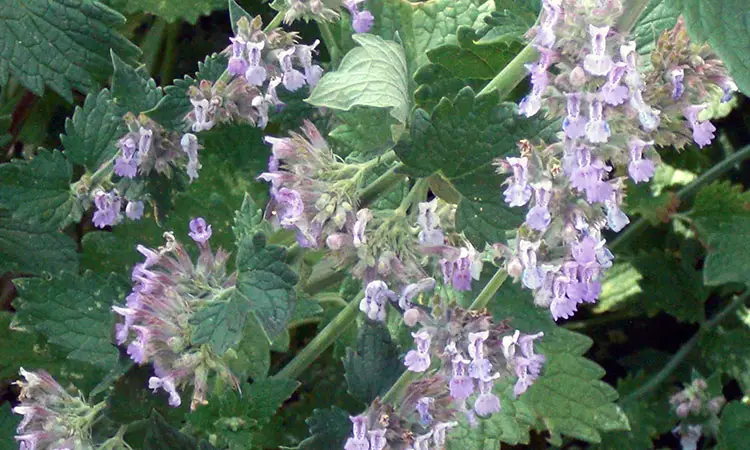 Nepeta faassenii ‘Blue Wonder’ source
Nepeta faassenii ‘Blue Wonder’ sourceCatmint nepeta x faassenii has other varieties available. One of the most prolific is ‘Select Blue’, a dusty green variety with an abundance of lavender flowear shoots from late May through mid-September. ‘Blue Wonder’ and ‘White Wonder’ also fall into this category, although both are occasionally cross-referenced as racemosa varieties. Blue Wonder has lavender-blue flowers, and White Wonder’s flowers are a brilliant white in hue.
Nepeta grandiflora ‘Dawn to Dusk’
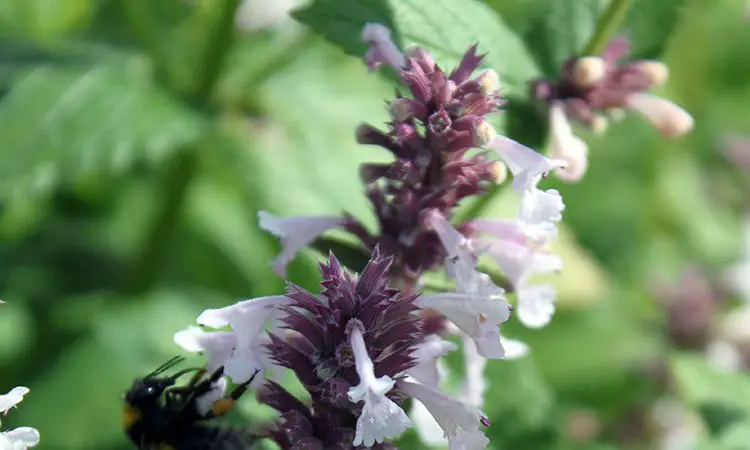 Nepeta grandiflora ‘Dawn to Dusk’ source
Nepeta grandiflora ‘Dawn to Dusk’ sourceThe pale pink flowers of this catnip plant are only one of the indications that ‘Dawn to Dusk’ is unusual. Reaching a height of at least 3.5 feet, with a spreading range a little narrower than it is tall, this catnip flowers from mid-June through late August. The foliage is an attractive sage green in color.
Other varieties of Nepeta grandiflora continue to be taller specimens. The largest, ‘Wild Cat’, grows to a height of 52 inches and has nearly six feet of spreading range. It blossoms an attractive lavender-blue shade from mid-June through late September. Other varieties include ‘Bramdean’ (blue flowers from mid-June through late September) and ‘Pool Bank’ (lavender-blue flowers from mid-June through early October).
Nepeta subsessilis ‘Candy Cat’
The subsessilis variety of nepeta tends to feature a lush green foliage overall, and most catmint plants are in the 30-32” range in height. But not so for ‘Candy Cat’, one of the smallest of the subsessilis varieties. The tips of its light violet flowers extend to about 14 inches in height, and it blossoms from mid-June through October.
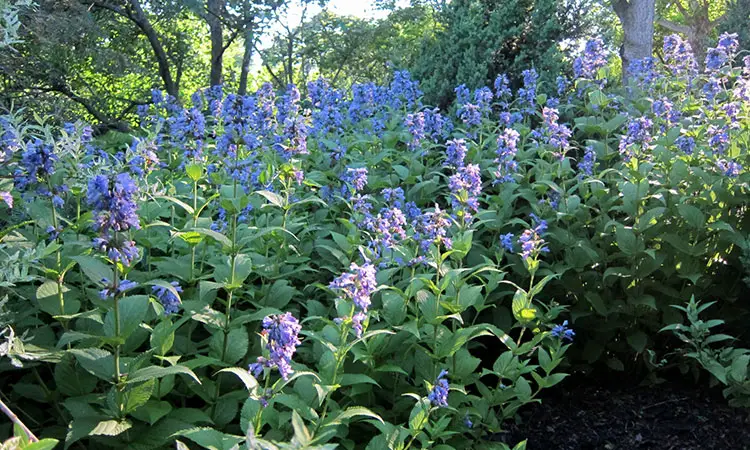 Nepeta subsessilis ‘Cool Cat’ source
Nepeta subsessilis ‘Cool Cat’ sourceNepeta subsessilis varieties also include ‘Sweet Dreams’ (pink catnip flowers blooming from early June through late September) and ‘Cool Cat’ (lavender flowers from early June through October).
Nepeta unclassified cultivars
There are quite a few other varieties which merely fall into the Nepeta species without a subclassification, many of which are award-winning. Two of these are Nepeta ‘Joanna Reed’ (a heavy producer of lavender-blue flowers from mid-May through late October) and Nepeta ‘Six Hills Giant’ (another prolific flower producer, which puts up lavender-blue towers from early June through October). Also notable for their pale petals are Nepeta ‘Blue Whisper’ (very pale lavender, almost whitish flowers from late April through early September) and Nepeta ‘Ice Blue’ (extremely pale blue flowers from early May through late September).
This is far from all of the varieties available – there’s also Nepeta ucranica, Nepeta yunnanensis, and hundreds more. These are just some of the most popular in garden usage.
Planting Catmint
Where does a catmint plant grow? Nearly everywhere! It is a perennial in most areas. You can plant catmint from the minute frost danger has passed through the early summer and into early fall, and it brightens up anywhere it’s grown with dazzling blossoms.
If starting from seed, sow indoors in January or February to get your plants started. Plant outdoors after the last threat of frost has passed, from spring through the early fall. Earlier is better if you plan to overwinter it as it has time to develop a good root structure. You can also direct seed anytime after the final frost if you would prefer to avoid transplant bruising.
These perennial plants are popular as an edging plant as well as in containers or in mixed gardens. As it is part of the mint family, tends to grow wider than it is tall, which means it can become invasive if not maintained. In areas which have very hot summers, try to select a location which receives some afternoon shade. In colder climates, it is hardy during colder weather as long as it’s well-mulched and is well established.
Plant catmint well-draining, compost-rich soil, 12-24 inches apart. As it spreads, it will fill in around other plants. Keep first year plants well-watered. Once they are more developed, they will become drought-tolerant. If planting with other plants, it will spread, so keep a watchful eye on your other plants to ensure it doesn’t crowd them out.
Interplanting in a rose garden is extremely popular, as it provides both a ground cover around the base of rose plants and a bit of height in its stems and blooms that covers the woody base of roses. It’s often planted with coreopsis, delphiniums, or peonies in informal cottage gardens.
Other plants that look good and thrive in a similar growing environment include European sage, Jupiter’s beard, yarrow, lamb’s ear, and poppy mallow.
Catmint Plant Care
You’ll find it’s easy to grow, as it’s drought-tolerant, resistant to many pests and diseases, and loves full sun. But there are a few tricks which stimulate the plant and provide the best visual experience in your garden.
Light and Temperature
Catmint prefers full sun, but in hot climates can benefit from some partial shade in the afternoon. It does well in most climates in full sun, but outside the growing season, if it’s cold outside, thickly mulch around the base of established plants for root warmth. A younger plant will not do as well in the cold as older plants will, and may benefit from a plastic cover in colder temperatures.
Ideal temperatures for catmint are between 55°F and 85°F. Leave spent foliage on the plant in the fall to overwinter, as it helps protect the plant’s crown.
Water and Humidity
For first-year plants, water regularly. For established plants, catmint is drought-tolerant or even drought-resistant. Because it is drought-tolerant you don’t want to water it too much, as this could create improper growing conditions. Average humidity is great for Nepeta species. In higher humidity settings, ensure you prune your plants for air circulation.
Soil
Humus-rich, compost-amended soil that is well draining is ideal. Add compost around the plant’s base in the fall, as that’s all the fertilizer it will need. Lots of different soil types are suited to growing catmint, and its wide pH range of 5 to 8 is a testament to that.
Fertilizing Catmint
Catmint thrives in varying soil types and doesn’t require fertilizer. In fact, if you do fertilize it or give it soil that’s too rich, it can cause growth problems. Therefore when it comes to fertilizer, skip it!
Pruning Catmint
After the first blooms have passed and are starting to fade after early summer has passed and the growing season is drawing to a close, trim back your plant by a third. This will encourage new growth, and usually results in a second flush of blooms later in the summer. It can bloom repeatedly on its own, but this trick tends to give you an almost spring-like flowering.
If you want to contain the plant’s overall size and convince it to bush out rather than spread, pinch back some of the new growth in the spring when it’s a few inches tall.
Catmint Propagation
The best way to propagate catmint is through division. Use a shovel to slice off a vertical section of a 3-4 year old plant in the spring growing season. Make sure the division has several young shoots and a good root system. Replant the division, and keep it well-watered until it becomes established.
You can also propagate via cuttings in the spring. Before flower buds form, cut three-inch long pieces of healthy shoots. Place the cuttings into a moist medium like a peat and perlite mix, or a good potting soil. They should take root within 2-3 weeks.
Harvesting Leaves For Your Cat
If you would like to harvest the gray green foliage for your cat, the levels of nepetalactone in the plant are highest when it’s flowering. The gray green foliage, flowers, and stem are all safe for your cat. Securely tie a string around a bunch of leafy, flowering stems, and then cut them below the string. Hang-dry the leaves in a cool, dark place like a closet where the cats can’t reach it.
You can also dehydrate using either a food dehydrator or the oven. If you use a dehydrator, follow manufacturer’s directions for drying herbs. If doing so in the oven, set the oven at the lowest-possible setting. Spread out your leafy, flowery stems on a cookie sheet and put it inside. Place something in the door of the oven to keep it cracked open to allow moisture to escape, and check it regularly.
When it’s dry and crumbly, it’s ready to store in an airtight container or heavy Ziploc bag. To keep fresh for your feline friends, store the dried plant in your freezer to ensure its potency for a longer period of time.
Troubleshooting
Catmint doesn’t have a ton of issues, but it does attract cats! Let’s discuss that and some other issues that can arise.
Growing Problems
While the growing problems associated with catmint aren’t severe, you can grow a floppy plant as it ages. The best way to help a floppy plant maintain its fullness is to prune it at the right time. Wait for spring when all danger of frost has passed. Then prune the floppy tips of the plant. Take no more than 1/3 of the outer parts of the plant.
As catmint ages, sometimes the center of the plant dies away and it becomes necessary to divide and move the two sections of the plant. Then plant catmint divisions in another appropriate area.
Pests
Amusingly, the most common pests are… cats. Freshly-transplanted plants should be given some form of screen or cover to keep cats away while they get adjusted, as the aroma of bruised nepeta leaves will bring all the cats to your yard. There is an old saying about nepeta cataria which reads,
Somewhere between 60-80% of cats like catmint, especially common catnip. This means that you may find your neighbor’s tomcat sprawling happily in your garden, drooling and purring. Other reactions which cats can have to catnip include intermittent vocalizing, a dazed expression, the tendency to get spooked or to jump and frolic, rolling around… the list goes on and on.
Catmint’s effects on your cat only last from 10-15 minutes, after which time the olfactory glands that cause the reaction will burn out. It can take a half hour or longer for their nose to return to normal, so once your cat has had its fun, it won’t go immediately back for seconds.
If you want to protect your garden from predators of the four-legged and furry variety, you can plant a separate cat garden in a separate area with well-draining soil, full sun, and some afternoon shade.
Plant Nepeta cataria along with other cat-friendly plants that produce similar effects. Some examples are Tatarian honeysuckle (Lonicera tatarica), lemongrass (Cymbopogon citratus), cat thyme (Teucrium marum), and silvervine (Actinidia polygama). Valerian root (Valeriana officinalis) also works in a similar fashion as catnip when dried, so sprinkling some dried valerian root around the cat garden will also entice them.
“If you set it, the cats will eat it. If you sow it, the cats don’t know it.”
And it appears to be true for many experienced gardeners – they have fewer issues with cats quickly discovering direct-sown plants as they don’t experience any bruising during transplanting.
Most other garden pests do not seem at all attracted to catmint. In fact, most voles, rabbits, and even cockroaches and mosquitos appear to be repelled by it. It’s even deer resistant!
Butterflies and bees are drawn to the flowers, meaning it’s a double-duty plant in the garden, as it invites in pollinators and dissuades pests.
Diseases
Similarly, it’s seldom subject to any diseases. It rarely can have some types of leaf spot, but even that is uncommon.
Frequently Asked Questions
Q: Is catmint annual or perennial?
A: It’s an herbaceous perennial in most cases, as long as you start it early enough that it can develop good root structure and you mulch it well in the late fall.
Q: Do humans react to catnip like cats do?
A: Whether it actually has any recordable result at all is a question that’s best asked of your local herbalist or physician, but it’s not considered poisonous in humans, and people occasionally use it in food or as a tea substitute.
Q: What are the best varieties to grow?
A: ‘Walker’s Low’, ‘Six Hills Giant’, ‘Joanna Reed’, and ‘Select Blue’, all of which were mentioned in the types segment above are great catmint varieties. The Chicago Botanic Garden did a study of multiple cultivars of Nepeta in 2007, and gave all four of these cultivars five-star ratings. Happily, all are popular and easily found at your local garden center.
Q: Does catmint Nepeta spread?
A: It does spread slowly over time. However, it’s not a plant you have to worry about taking over a garden bed.
Q: Is Nepeta and catmint the same?
A: Nepeta is the genus that catmint and catnip both fall under. So, while catmint is in the same genus as catnip, they aren’t the same species.
Q: Does Nepeta catmint attract cats?
A: Oh, boy! You bet it does. Therefore, if you live in an area that has a lot of neighborhood cats patrolling the grounds, plant a lot of it, or plant catmint in a garden that is separate from areas where you don’t want cats.
Q: Does catmint keep bugs away?
A: It keeps certain garden pests away, but attracts cats! It’s also a great pollinator plant, and an attractant for beneficial insects that prey on pests.
Q: Do pollinators like catmint?
A: They do! Not only does the plant attract bees and butterflies, it also attracts beetles, moths, and hummingbirds.

